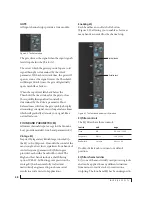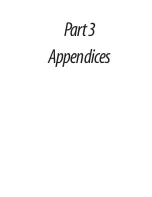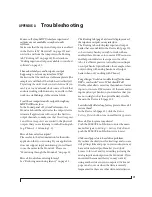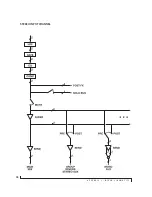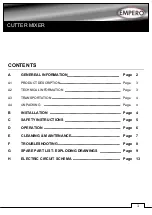
M I X E R E F F E C T S
61
Enabling or disabling the Leveler
The Leveler models the LA-2A so closely, it also
models the time it takes for an actual LA-2A to
“warm up” after it is turned on. Therefore, when
you enable the Leveler, give it a moment to “settle”
before you begin processing signals with it.
Gain Reduction
Gain Reduction
(Figure 8-5) sets the strength of the
signal sent to the AGC model.
Makeup Gain
Makeup gain
(Figure 8-5) amplifies the output
signal to make up for gain reduction.
Limit button
The
Limit
button (Figure 8-5) models the original
LA-2A Limit/Compress mode switch. The effect is
very subtle, with the Limit option behaving only
slightly more like a limiter than a compressor. The
switch increases the level of the input to the AGC
model and runs the attenuator at a slightly lower
level. The Leveler then responds more strongly to
transients, but otherwise still behaves like a leveling
amplifier.
REVERB
Use the enable/disable button (Figure 8-6) to turn
the reverb processor on or off. Since reverb uses
considerable DSP resources, it is best to leave it off
when you are not using it.
Figure 8-6: The Reverb processor.
Routing inputs and groups to the reverb
processor
The reverb processor is a single, independent unit
that provides stereo reverb. You can route any input
channel or Group bus to the Reverb processor with
the Reverb send on its channel strip. All incoming
signals to the reverb processor are merged and
processed together. The resulting stereo output
from the reverb can then be merged into the Main
Mix bus with the Main send on the Reverb channel
strip (item #6 on page 20).
Reverb Time
Reverb time
(Figure 8-6) determines the length of
decay, or
tail
, of the reverb. The knob’s range is
from 100 milliseconds to 60 seconds.
Predelay
Predelay
is the amount of time before the acoustic
energy from the source returns to the listener, after
reflecting off the surfaces of the listening space.
The very first reflections helps you perceive
information about the listening space, (size,
distance, surface type, etc.). In large rooms, it takes
a while (on the order of milliseconds) before the
first reflections return to the listener. Predelay is
useful for adding clarity, as it delays these
reflections, before the onset of full reverberation.
For example, with pre-delay added to vocals, the
reflections won’t start until after the initial sound of
a word has been sung.
Spread
Spread
controls stereo imaging. A position of 12
o’clock produces essentially a mono image.
Turning the control all the way to the left
completely swaps the stereo image.
High and Mid frequency bands
The High and Mid frequency bands let you
independently control the reverb time for separate
frequency bands, relative to the low frequency
reverb time. The
High
setting represents the
bottom frequency of the High band; the
Mid
Содержание Monitor 8
Страница 5: ...Part1 GettingStarted ...
Страница 6: ......
Страница 8: ...8 ...
Страница 26: ...P A C K I N G L I S T A N D S Y S T E M R E Q U I R E M E N T S 26 ...
Страница 30: ...S O F T W A R E I N S T A L L A T I O N 30 ...
Страница 41: ...Part2 Usingthe Monitor8 ...
Страница 42: ......
Страница 56: ...W O R K I N G W I T H H O S T A U D I O S O F T W A R E 56 ...
Страница 69: ...Part3 Appendices ...
Страница 70: ......
Страница 74: ...A P P E N D I X B A U D I O S P E C I F I C A T I O N S 74 ...
Страница 75: ...APPENDIX 75 C Mixer Schematics MONO INPUT CHANNEL ...
Страница 76: ...A P P E N D I X C M I X E R S C H E M A T I C S 76 STEREO INPUT CHANNEL ...
Страница 77: ...A P P E N D I X C M I X E R S C H E M A T I C S 77 GROUP BUS ...
Страница 78: ...A P P E N D I X C M I X E R S C H E M A T I C S 78 MONITOR BUS ...
Страница 82: ...A P P E N D I X E O S C S U P P O R T 82 ...












